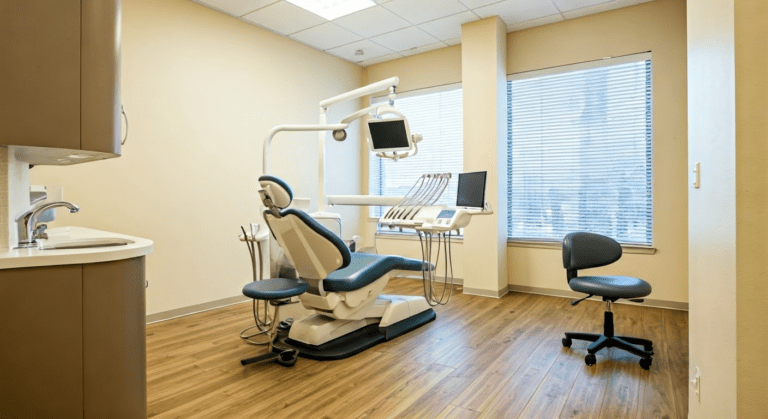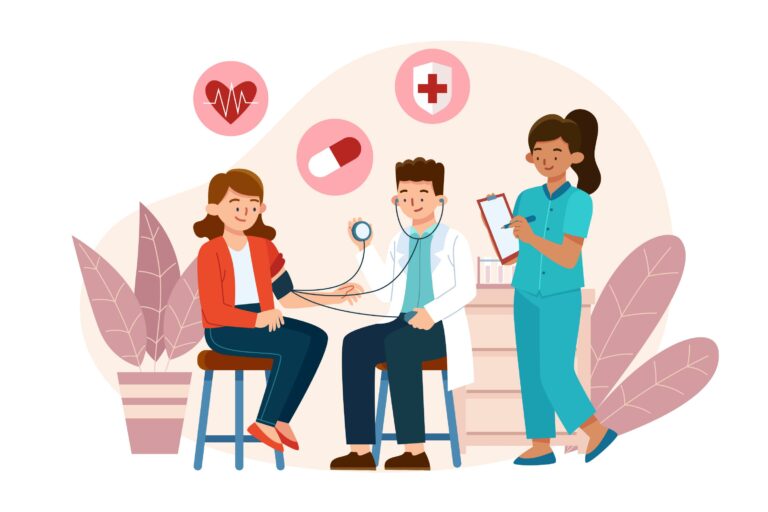How to Increase Production in Dental Practices?
Running a dental practice today goes far beyond providing great clinical care—it’s about managing time, people, technology, and patient expectations, all at once. Yet, many dental offices struggle with the same challenges: inconsistent workflows, underutilized staff, outdated systems, and patients slipping through the cracks. The result? Missed revenue opportunities, burnout, and stagnation.
If you’ve ever felt like your practice is working hard but not smart, or that your team is constantly busy without actually increasing production, you’re not alone. The good news? It doesn’t have to stay that way.
This blog dives deep into actionable strategies to streamline your operations, boost efficiency, and create a patient experience that drives case acceptance for active patients and keeps people coming back. Whether you're trying to reduce no-shows, fill gaps in your schedule, improve treatment acceptance rates, or simply free up more time for what matters most, we’ll show you how to do it with smarter systems, better team alignment, and scalable solutions.
What are the Signs that Your Dental Office is Not Productive?

Increasing productivity starts by identifying the potential areas requiring improvement in your dental office production. When these diverse facets function cohesively, productivity is bound to spike, ultimately impacting your dental practice’s profitability. But the main concern here is, how will you enhance your team's productivity? The subsequent sections offer valuable insights into this realm, providing detailed strategies to augment productivity levels in a dental office.
1. Clinical Operations vs. Office Management Synergy
The standard practice in a successful dental office entails two separate but intertwined entities: clinical operations and dental production office management. This dual system needs excellent coordination to witness a discernible upswing in productivity, aligning with industry standards. Below, we present a contrast between the two aspects:
| Clinical Operations | Office Management |
|---|---|
| Direct involvement with patients through procedures like oral exams, diagnosis, and treatment. | Includes administrative duties like scheduling appointments, maintaining patient records, and billing. |
| Requires a skillset related to dentistry and patient care. | Requires organizational capabilities, communication skills, a handle on billing software, and storage systems. |
| Calls for the individual's interpersonal empathy, moral ethics, and professional competence. | Necessitates a cordial demeanor, problem-solving abilities, adeptness at multitasking, and keen attention to detail. |
It's crucial to note that these two segments are interdependent, and their harmonious interaction is essential for seamless office operations and enhanced productivity.
2. Recognizing Productivity vs. Busyness
At first glance, employees bustling about might give the impression of productivity, while they could just be busy without substantial work output. It's essential to identify this distinction and promote smart work over hard work.
Inefficient work practices mark a busy person, while efficiency is at the core of a productive individual's actions. Busy individuals might appear occupied relentlessly, but their work lacks focus. On the contrary, productive individuals work with pinned attention. On comprehending this difference, one can initiate measures to shift the team from mere busyness to robust productivity.
3. Optimizing Office Systems for Smoother Operations
Inefficient systems slow down even the best dental teams and dental practice staff. From outdated scheduling methods to manual billing processes, including insurance claims, these bottlenecks waste time and energy. By upgrading to smart, automated tools—such as digital patient forms, integrated billing software, or appointment reminders—dental offices can reduce errors, improve cash flow, cut down administrative load, and speed up routine tasks. A great way to implement a well-optimized system ensures smoother daily operations, keeps things running on time, and allows staff to focus more on patient care than paperwork.
Additionally, when everyone in the office—from front desk to chairside assistants—has clarity on roles, expectations, and daily plans, operations flow much more smoothly in less time.
How Can You Enhance the Patient Experience to Boost Dental Office Productivity?

A protracted waiting time can cost a dental practice its valuable patients time. .Patient wait times need to be monitored to tackle this issue effectively. Here's how to go about it:
1. Reducing Patient Wait Times
A protracted waiting time can cost a dental practice its valuable patients. Patient wait times need to be monitored to tackle this issue effectively. Here's how to go about it:
- Interact with waiting patients, letting them know they have not been forgotten.
- Discuss waiting times upfront. If delays arise, inform patients, giving them an estimate of the waiting time.
- Provide additional information regarding the delay and how long it will be before the dentist can see them.
- Create a perception of reduced wait times by inviting patients to pause in an exam room rather than the waiting area.
2. Streamling Patient Intake
Manual or analog methods of collecting patient information not only slow down the intake process but also increase the potential for errors and inefficiencies. Transitioning to digital systems can significantly improve both the patient experience and office productivity. Here’s how:
- Automated systems reduce the need for staff to manually enter data, freeing them up to focus on higher-value tasks. Moreover, real-time electronic updates reduce errors caused by illegible handwriting or manual data entry, leading to better decision-making.
- Secure digital systems help safeguard sensitive patient information, reducing the risk of breaches or accidental exposure. These digital records help maintain compliance with HIPAA and other regulations by maintaining a traceable, protected flow of information.
- With cloud-based storage, patient information is accessible to authorized personnel instantly, improving workflow and care coordination.
3. Proactively Addressing Patient Complaints
Every dental office, no matter how well-run, will face occasional patient complaints. The key is not to avoid them, but to manage them proactively and constructively. Here's how to turn complaints into opportunities for growth:
- Designate a team member or patient care coordinator to handle all complaints. This gives patients a consistent and approachable avenue for voicing concerns. Empowering your team with communication and empathy training is an excellent way to make sure they can de-escalate tense situations calmly and confidently.
- Make it easy for patients to share feedback—whether through surveys, suggestion boxes, or follow-up calls. The more accessible you are, the earlier you can catch potential issues. You can categorize these complaints to identify recurring issues. Are delays common? Is communication lacking? Using surveys is a good way to gather insights and adjust internal processes to prevent future problems.
- Timely acknowledgement and resolution show patients you take their concerns seriously. Even a simple follow-up can turn a negative experience into a positive one.
- A follow-up call or email shows patients that their feedback mattered and that you value their trust and loyalty.
- Make feedback part of your team’s regular review process to foster a mindset of continuous growth and service excellence.
4. Providing Top-Notch Hygiene Care
Consistent hygiene care is one of the most overlooked drivers of production in a dental practice. In this section, we’ll explore how turning routine visits into non-negotiable habits can elevate both patient outcomes and practice efficiency.
- Equip your front desk and clinical team with scripts and talking points to educate patients on the importance of regular dental hygiene visits.
- Highlight the value of coming in every six months to prevent dental issues and maintain oral health. This is essential since regular hygiene appointments often lead to increased uptake in antibacterial therapy, sealants, whitening treatments, and adjunctive re-care services
- Schedule the next appointment before the patient leaves and confirm all appointments at least 48 hours in advance to reduce no-shows.
- When patients call, check when they were last seen. If it’s been a few months, recommend booking an appointment right away by asking potential patients about their last treatment and suggesting a visit based on that timeline.
- Remind patients that consistent cleanings and x-rays help prevent cavities, gum disease, and costly future treatments.
- Use treatment history and due dates for cleanings as reminders to reach out, keeping your schedule consistently busy.
How to Transform Dental Office Ergonomics for Better Performance and Staff Well-being?

Creating a high-performing dental practice goes beyond clinical expertise—it requires an environment that actively supports comfort, efficiency, and focus. Enhancing your office’s ergonomic setup not only improves the daily experience of your staff but also contributes to smoother, more productive operations.
1. Why Smarter Lighting Makes a Big Difference in Your Dental Practice
Let’s be honest—dealing with dim or uneven lighting during dental procedures is more than just frustrating; it can affect your precision. Constantly shifting lights or battling shadows doesn’t just slow you down—it can compromise care.
Switching to high-quality LED lighting provides consistent, shadow-free illumination so you can focus fully without interruptions. For those hard-to-reach areas, advanced curing lights offer targeted visibility, helping you work more accurately and efficiently.
Good lighting isn’t just about comfort—it directly impacts patient care and clinical outcomes.
2. Bring Nature Indoors to Elevate Mood and Air Quality
Incorporating plants into your dental office does more than brighten up the space—it supports mental well-being and cleaner air.
Greenery is proven to reduce stress, improve focus, and uplift the overall atmosphere for both staff and patients. A few strategically placed plants can make your practice feel more welcoming and help patients feel at ease the moment they walk in.
3. Design a Layout That Works With You, Not Against You
Your workspace layout directly influences how efficiently your team can perform. Keep instruments, materials, and frequently used items within easy reach to avoid unnecessary movement and fatigue.
Opt for ergonomic chairs and workstations that promote healthy posture and reduce strain. A well-thought-out setup creates smoother workflows and makes everyday tasks more comfortable and efficient.
4. Shift the Focus from Multitasking to Mindfulness
While juggling multiple tasks might seem efficient, it can actually lead to burnout and errors. Encourage your team to focus on one task at a time, leading to sharper attention and better performance.
To support this, create a small, quiet area where staff can decompress between appointments. Just a few minutes of calm can go a long way in recharging their energy and focus.
How to Foster Improved Communication and Collaboration?

Promote transparent and effective communication systems amongst your dental team for a smooth flow of operations. Utilizing modern software promotes real-time information sharing and reduces unnecessary delays. An efficient team paves the way for an effective and successful dental practice.
1. Start the Day Strong with Purposeful Morning Huddles
Daily morning huddles set the tone for the entire day. When done right, they don’t just cover logistics—they energize your team and encourage a proactive mindset by sharing relevant information. These short, 10–15-minute meetings help unify everyone around shared production goals and highlight potential friction points before they occur, making them the best way to enhance team productivity.
A productive huddle should include:
- A review of the day's appointments – Ensure that everyone is aware of the schedule, including any double bookings, complex cases, or gaps that could be filled.
- New and returning patient updates – Alert the team about new patients who might need extra care or long-time patients who may appreciate a personalized touch.
- Outstanding treatments or balances – Help front desk staff and clinicians stay on top of pending procedures and payment follow-ups.
- Special notes and requests – Flag any patient-specific preferences, accessibility needs, or potential anxiety triggers to deliver a more personalized experience.
- Hygiene schedule optimization – Confirm re-care appointments and cancellations to keep the hygiene team running at full capacity.
Morning huddles reduce last-minute surprises, improve communication, and ensure your team starts the day with clarity and collaboration.
2. Strengthen Communication Between Front Desk and Clinical Staff
Front desk and clinical staff members must operate as a unified team, not separate departments. Miscommunication between these roles often results in bottlenecks, frustrated patients, and lost revenue opportunities.
To foster seamless coordination:
- Utilize dental practice management software like Dentrix, Eaglesoft, or Open Dental to keep patient data, treatment plans, and appointment notes accessible in real time.
- Implement a shared task system for notes and reminders between departments.
- Develop handoff protocols for when a patient moves from reception to the treatment room and back—this ensures nothing falls through the cracks.
- Hold bi-weekly cross-role meetings to discuss what’s working, what’s not, and where process improvements can be made.
When front desk and clinical staff are on the same page, it improves patient flow, reduces confusion, and helps your team deliver consistent, high-quality care.
3. Invest in Training and Team Development
A dental practice is only as strong as the people behind it. Ongoing training ensures that your team stays current with best practices and evolving technology, while team-building enhances morale and cohesion.
Here’s how you can build a growth-focused culture:
- Host monthly workshops or lunch-and-learns to cover new dental procedures, patient communication strategies, software training, or regulatory updates.
- Encourage cross-training so that team members understand each other’s roles and can step in when needed.
- Organize regular team-building activities—these don’t need to be elaborate. A simple after-hours gathering or a fun in-office challenge can go a long way in promoting trust and cooperation.
- Reward continuous learning by recognizing team members who pursue certifications, attend seminars, or contribute innovative ideas to improve practice operations.
Looking to Boost Your Practice's Productivity Without the Overwhelm?

Running a dental practice is no small feat. Between managing patient care, coordinating schedules, and handling administrative tasks, it can feel like there's never enough time in the day. But what if there was a way to streamline your operations and enhance efficiency, all without adding more stress to your plate?
Technology plays a pivotal role in streamlining operations, reducing manual intervention, and enhancing efficiency for insurance companies. Automated billing systems, practice management software, electronic patient records, and digital scheduling solutions help insurance providers save time, reduce errors, and provide seamless patient care.
Designed by dental professionals for dental professionals, Practice by Numbers offers a comprehensive suite of tools to help you optimize your practice's performance. From seamless integration with your existing practice management software to real-time analytics that empower data-driven decisions, PbN provides everything you need to elevate your practice's productivity.
What sets PbN apart?
- Tailored for Dental Practices: Unlike generic software solutions, PbN understands the unique challenges of dental offices and offers features specifically designed to address them.
- User-Friendly Interface: PbN's intuitive design ensures that you and your team can quickly adapt and start benefiting from its features without a steep learning curve.
- Comprehensive Features: From patient relationship management to advanced analytics, PbN covers all aspects of practice management, ensuring nothing falls through the cracks.
- Proven Results: Many dental professionals have shared how PbN has transformed their practices, leading to increased efficiency and improved patient satisfaction.
Ready to take your practice to the next level? Get a demo on how Practice by Numbers can help you achieve your goals.
Conclusion
Boosting productivity is key to streamlining operations and achieving success in any dental office. By identifying areas needing improvement, enhancing patient experience, optimizing office systems, and nurturing communication and collaboration, you can take substantial strides in cultivating an effective and successful dental office. It’s a good idea to implement staff development programs, such as regular workshops and a performance recognition reward system, including incentives for no sick days, which play a pivotal role in boosting morale and encouraging productivity within the team. By implementing these strategies, your dental office can certainly witness an uptick in productivity, ensuring a smoother workflow, a superior patient experience, and ultimate practice prosperity.




